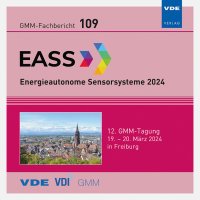Smart Infrastructure – Autonomous Energy Supply of a Sensor Node
Konferenz: EASS – Energieautonome Sensorsysteme 2024 - 12. GMM-Tagung
19.03.2024-20.03.2024 in Freiburg, Germany
Tagungsband: GMM-Fb. 109: EASS 2024
Seiten: 3Sprache: EnglischTyp: PDF
Autoren:
Lang, Benjamin Gregory; Hehn, Thorsten; Schillinger, Daniel
Inhalt:
In the project ALFRIED (Automatisiertes und vernetztes Fahren in der Logistik am Testfeld Friedrichshafen http://www.alfried.net) the development of a complex and comprehensive mobility system at the testing area in Frie-drichshafen was publicly sponsored with the specific focus on inner city transportation of goods. The mobility system is comprised of smart infrastructure, smart vehicles, a digital platform, and a smart city control and data center. Therein Hahn-Schickard developed the energy supply and energy management for a sensor node (roadside delineator) as part of the smart infrastructure with the goal of energy autonomy, harnessing multi-modal energy sources. Possible energy sources were identified and characterized regarding their energy input and harvesting complexity, specifically, light, wind, vibrations and temperature gradients at the delineator post. The sensor nodes itself were fitted with ultra wide band sen-sors, which are able to detect passing vehicle type, speed, and road conditions, like ice, mist or rain. The smart energy management is based on a maximum power point tracking, which combines multiple energy sources, like solar and wind energy. In order to keep the design of a regular delineator post, it was fitted with white solar panels. This allows for roadside energy extraction of up to 10 W. Aiming to maintain functionality over 20 days without harvested energy input, the design was enhanced with a specifically designed battery pack. Furthermore commercially available wind generators were tested for energy harvesting potential and maximum input power. Lastly, an algorithm for future energy availability was developed, which predicts the harvested energy amount on basis of local environmental situation and weather forecast data.


